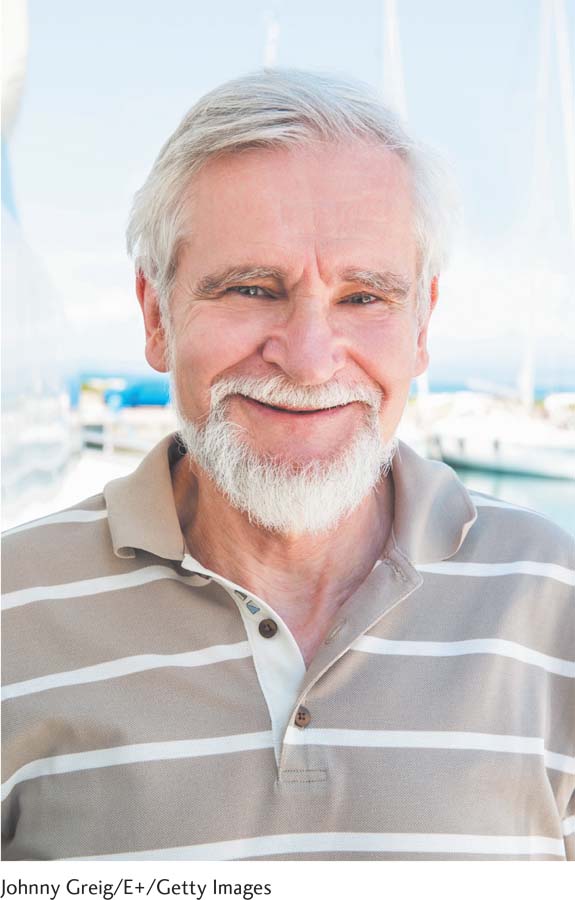Chapter Introduction
CHAPTER 13
388

Later Life: Cognitive and Socioemotional Development
CHAPTER OUTLINE
Setting the Context
EXPERIENCING THE LIFESPAN: Ageism Through the Ages
The Evolving Self
Memory
INTERVENTIONS: Keeping Memory Fine-
Personal Priorities (and Well Being)
EXPERIENCING THE LIFESPAN: Jules: Fully Functioning at Age 94
INTERVENTIONS: Using the Research to Help Older Adults
Later-Life Transitions
Retirement
HOT IN DEVELOPMENTAL SCIENCE: U.S. Retirement Realities
Widowhood
EXPERIENCING THE LIFESPAN: Visiting a Widowed Person’s Support Group
389
Ten years ago, at age 62, Susan and Carl retired. They were healthy (at the time)—and with Carl’s investments and their pensions—
For Susan and Carl, retirement meant spending time with their closest friends and family members, like Emma. It involved devoting weekdays to volunteering at church and taking those well-
After Carl’s death, Susan felt numb. How can you go on without your high school sweetheart, your life love for more than 50 years? But she was astonished by her mixed emotions: the loneliness and sense of loss, even when surrounded by her friends; the incredible joy (for the priceless relationship she and Carl had); the relief that Carl never had to suffer being bedridden; pride in her ability to go on.
Actually, for the most part (bless the Lord), Susan has been amazed at her inner strength. Realizing that as an “old lady of 72” she needed to make a new life, Susan enrolled in an adult education program at the local college. With Emma’s help, she mustered the courage to construct a profile on a seniors’ dating website. Of course, no one will ever, ever take Carl’s place. But wouldn’t it be fun to try dating, liberated from the fears of being rejected or anxieties about making an adult life she had at age 21!
Susan’s life changed dramatically from the time she and Carl retired until her husband got sick and died. These two chapters capture the developmental shifts people experience as they travel through the young-
Susan’s life differs dramatically from most elderly widows around the globe—